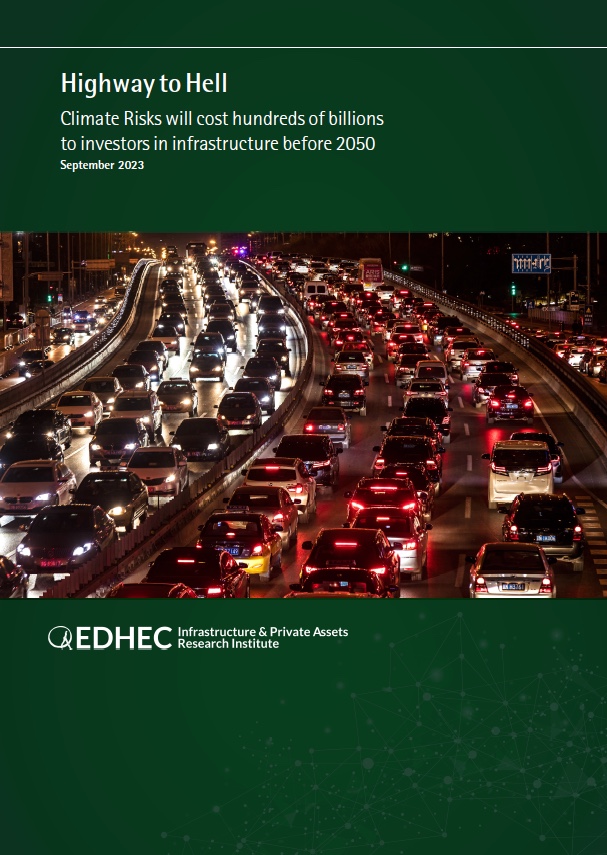
Summary
This paper presents an assessment of transition and physical risks in the privately invested infras-tructure sector. Leveraging the NGFS scenarios, we quantify the costs associated with delayed or uncoordinated transition and evaluate the potential portfolio value loss resulting from physical risks in the absence of climate action.
We measure company-level transition risk as the difference in Net Asset Value (NAV) between disorderly and orderly scenarios. First, we analyze the statistical relationship between infrastructure companies’ total assets, revenues, operational expenses (OPEX), profits, and countries’ GDP and inflation using historical data. Second, we apply the estimated relationship between these variables to a reference dataset of about 700 infrastructure companies tracked by EDHECinfra’s infraMetrics. Finally, we extrapolate the reference-based results to our universe dataset of about 9,000 firms to calculate the value of the transition risk faced by infrastructure investors.
Our analysis reveals the importance of transition risk for the infrastructure sectors. A disorderly scenario could result in a substantial loss of value to infrastructure investments of nearly USD600 billion. That sum is equivalent to approx-imately 30% of the total invested value in infra-Metric’s 9,000 infrastructure assets. Moreover, the negative effects of transition risk will be felt across all sectors, including low-carbon ones such as Renewables and Social Infrastructure.
In addition, we isolate the physical risk effect by calculating the difference of net asset values between ”the hot house world” and an orderly scenario. We also analyse the microeconomic effects of physical risk within the hot house world scenario, as this result is of particular importance to investors with assets that are highly exposed to climate events. And to determine the extent to which an investor may be exposed to physical risk, we generate a random combination of assets to show how risky an infrastructure portfolio could be in terms of physical risk.
Physical risks are also significant at the microe-conomic level. We show that the cost of physical risks within the Current Policies scenario repre-sents, on average, 4.4% of the total NAV in our reference database by 2050, with large varia-tions across sectors. The effect of extreme climate events is negative across all sectors. In the most extreme cases, when investors are exposed to the riskiest assets in the same portfolio, losses can amount to 54% in the hot house scenario. Moreover, portfolios only need one or two highly exposed assets to be significantly impacted.
Our estimations do not fully capture the transition and physical risk effect. First, the carbon footprint of sectors such as Energy and Water Resources and Network Utilities are underrepresented when considering only Scope 1 and 2 emissions. Second, the transition risk effects go beyond the impact of carbon taxes. Following TICCS® and the EU taxonomy, we show that as countries transition to a low-carbon economy, the market value losses in Europe could reach up to USD9 billion in stranded assets. Finally, the magnitude of physical risk may be underestimated due to the NGFS assumptions.
Based on the evidence presented in this paper, we recommend that investors demand coordi-nated actions and that governments immedi-ately implement carbon taxes to minimize the adverse financial effects of transition risk. The worst impact comes from failing to react until too late.
